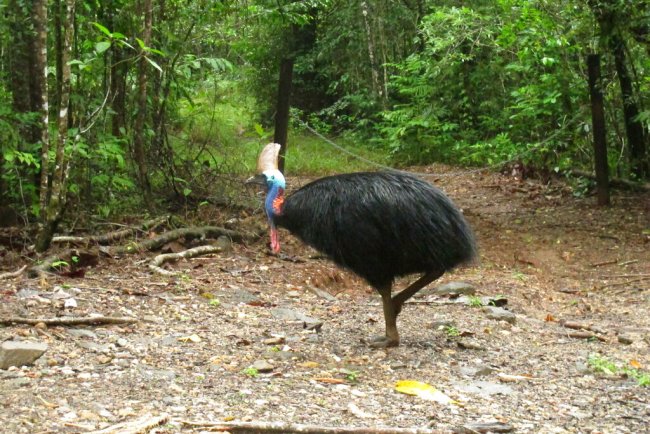A large, flightless bird native to Australia and New Guinea attacked and killed its owner when the man fell on his property in Florida, authorities said Saturday.

FILE - In this June 30, 2015, file photo, an endangered cassowary roams in the Daintree National Forest, Australia. On Friday, April 12, 2019, a cassowary, a large, flightless bird native to Australia and New Guinea, killed its owner when it attacked him after he fell on his property near Gainesville, Fla. Cassowaries are similar to emus and stand up to 6 feet (1.8 meters) tall and weigh up to 130 pounds (59 kilograms). (Photo: AP)
The Alachua County Fire Rescue Department told the Gainesville Sun that a cassowary killed the man Friday on the property near Gainesville, likely using its long claws. The victim, whose name was not released, was apparently breeding the birds, state wildlife officials said.
"It looks like it was accidental. My understanding is that the gentleman was in the vicinity of the bird and at some point fell. When he fell, he was attacked," Deputy Chief Jeff Taylor told the newspaper.
Cassowaries are similar to emus and stand up to 6 feet (1.8 meters) tall and weigh up to 130 pounds (60 kilograms), with black body feathers and bright blue heads and necks.
The San Diego Zoo's website calls cassowaries the world's most dangerous bird with a four-inch (10-centimeter), dagger-like claw on each foot.
"The cassowary can slice open any predator or potential threat with a single swift kick. Powerful legs help the cassowary run up to 31 miles per hour (50 kph) through the dense forest underbrush," the website says.
Cassowaries are not raised for food in the U.S., but are sought after by collectors of exotic birds.
To obtain the mandatory permit, the Florida Fish and Wildlife Conservation Commission requires cassowary owners to have "substantial experience" and meet specific cage requirements, spokeswoman Karen Parker told the newspaper.
Wildlife officials did not answer phone calls late Saturday from The Associated Press and it could not be learned what happened to the bird.


